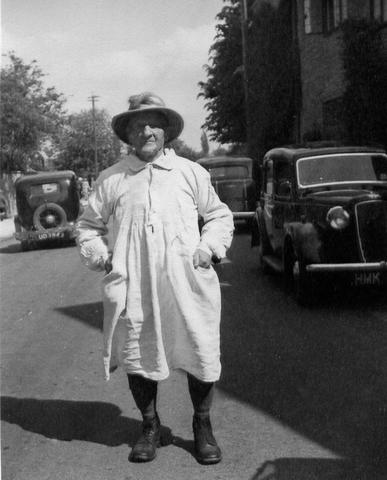Identity area
Reference code
Title
Date(s)
- 1950s (Creation)
Level of description
Item
Extent and medium
image
Context area
Name of creator
Biographical history
Archival history
Immediate source of acquisition or transfer
Content and structure area
Scope and content
Sam Bennett. He moved to Warwickshire but walked to Bampton to fiddle for the Morris at Whitsun. He would arrive at Mr & Mrs Townsend's Castle Farm on Bridge St and announce 'I be 'ere'. To earn his keep, he'd stay on for a few weeks doing farm work for Mr Townsend.
"The war took away many of the young men, and for the first time in recorded history the Whit Monday performances were suspended during 1917 and 1918. However, Wells had recently taught the dances to a group of men at Alvescot, and on the Whit Monday 1919 two of these stepped into the reformed Bampton set. One stayed only that year, but the older, William Flux, had married a daughter of long-time lead dancer Thomas Tanner, and became the organiser of the team.
This brought him into conflict with Wells - Flux wanted them to dance more at Pubs, Wells at the private houses - and this reached crisis point in 1925. The following year Wells refused to play for them, so both Bertie Clark from Alvescot and Sam Bennett from Ilmington were drafted in to provide music.
In 1927, for the first time in recorded history, two teams appeared on the streets: the old side under Tanner and Flux, and a young side recently raised by Wells. They continued in relatively peaceful co-existence for some years, but by the mid 1930s performances by the Tanner side were more sporadic, with only Wells fielding a team most Whit Mondays.
The final appearance by the Tanner team was in 1941, and it was left to Wells to keep it going during the war, and beyond." Keith Chandler

